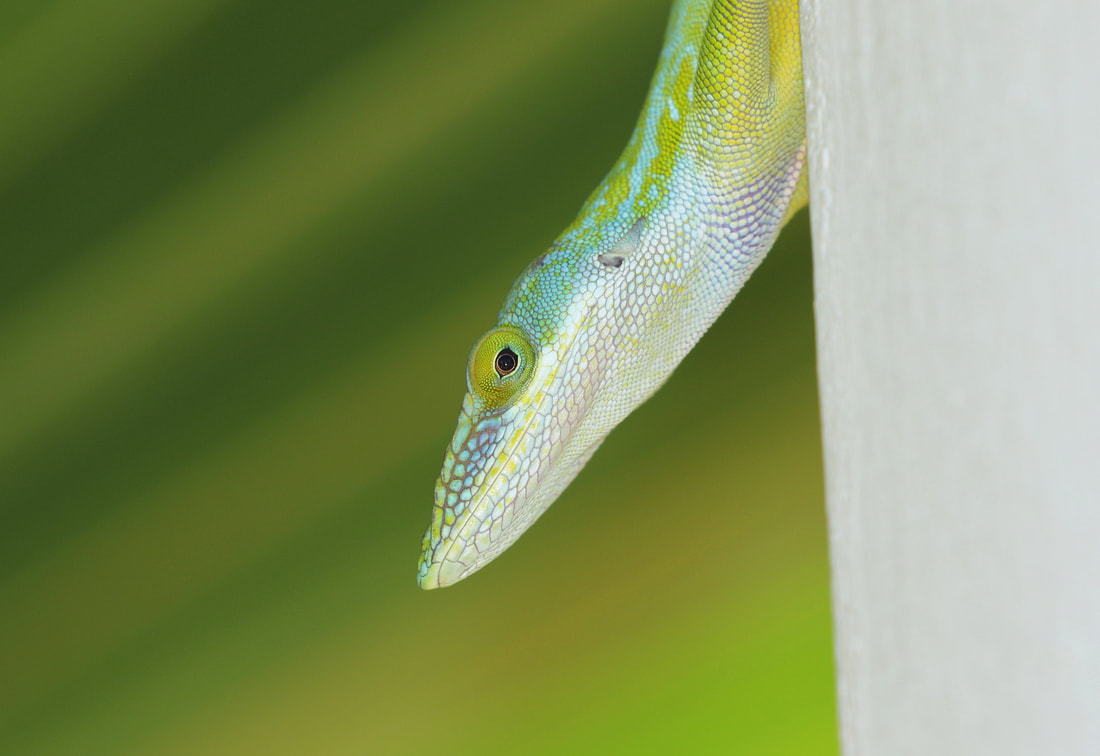|
We explored a little further afield today to get the lie of the surrounding land. Within a few hundred meters of the hotel was a large climbing frame so I went to the top to take some pictures. The left-hand picture looks across east towards the inland lagoon in which stand some of the more expensive Hotel Meliá chalet rooms. There are more on dry land where we stayed. The right hand picture looks to the west and shows some of the extensive damage to the mangroves that was caused by Hurricane Irma two years before, in 2017. The dead grey branches had previously been a verdant green with lots of life. There's not much sign of recovery yet but it will do so in time if it isn't hit by another in the meantime. We looked around for nectar sources and found a strip of white flowers reminiscent of Phyla nodiflora but with all white flowers, longer stems and longer leaves. Douglas Fernandez has kindly identified them for me as Spilanthes urens (Asteraceae). There were lots of Lyside Sulphur Kricogonia lyside and Great Southern White Ascia monuste nectaring here. In fact there were more Lyside Sulphur here than we had ever seen before in total and it proved to one of the commonest butterflies we saw on this trip. We saw only 19 butterfly species today but this included the first of many Pygmy Blue Brephidium exilis beside the lagoon. On the reptile front there were Cuban Brown Anole Anolis sagrei, several Cuban Whiptail Pholidoscelis auberi around the open roadside edges and several Cuban Blue Anole Anolis allisoni on the hotel buildings. We had seen on the internet that people had seen West Indian Whistling Duck regularly on the lagoon and since this would be a new bird for me we were keen find them and weren't disappointed. A small number seemed to be present most days. It is largely sedentary, apart from local movements, and is found throughout the Caribbean Islands with a large breeding population in the Bahamas. White-winged Doves are normally fairly shy but one was was busy collecting nest material on the lawn today and seemed to be indifferent to me. They are found in the southern USA down through South America and the greater Antilles. They are quite common in Cuba. Like most pigeons the nest is a thin platform of twigs and grasses on which they lay two eggs. And I managed one distant shot of this day-flying moth that looks similar to Ctenuchidia virgo but isn't. It is in the Erebidae: Arctiinae but that's as close as I can get for the moment. Postscript: Yosiel Álvarez has now kindly identified this as Composia fidelissima. It is found in southern Florida and the West Indies including Cuba. Thank you Yosiel.
2 Comments
Yosiel
23/3/2020 04:21:11 pm
Hey Tim, this is Composia fidelissima (Arctiinae)
Reply
Tim
23/3/2020 05:47:33 pm
Brilliant, many thanks Yosiel
Reply
Leave a Reply. |
Welcome to our Blog
Here we will post interesting news about what we and others have seen in Cuba. Archives
July 2024
Categories |















 RSS Feed
RSS Feed